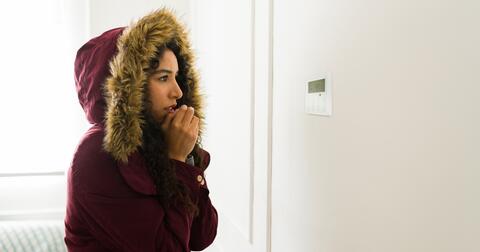Hawaii offers a case study on the inadequacies of wind and solar
Rolling blackouts could prove deadly in Michigan winters
Rolling blackouts in the Aloha State presage things to come in Michigan.
Michigan’s new net-zero and “100% clean energy” policies mirror Hawaii’s “goal of 100% renewable energy by 2045.” These energy plans are causing both states to rely on more weather-dependent wind and solar, which means that reliability issues are becoming more pronounced.
On Jan. 8 and 9, heavy rains hit much of the island of Oahu. News releases from Hawaiian Electric, the island’s main electric utility, explained that during the storm two large generating units at the Waiau Power Plant had gone offline. In an email, company officials said that water damaged a control system at one plant. The system at a second plant “tripped after a tie-in to the grid was damaged, likely by weather.”
That was unfortunate timing, for as the utility noted, it had also recently taken several generation units offline for scheduled maintenance. Lower electricity demand at this time of year lets the company plan maintenance outages that are not possible in the summer, when air conditioning drives greater customer demand.
In the email, utility officials said they had “plenty of reserve margin until we didn’t,” which is when the two big plants went down. For readers who may not be familiar with utility-speak, reserve margin is effectively a cushion that helps a company supply its customers with the electricity they want. “A reserve margin of 15% means that an electric system has excess capacity in the amount of 15% of expected peak demand,” as the Energy Information Administration explains.
Reserve margin capacity must also be dispatchable. In layman’s terms, that means the generating facility can produce electricity when it is needed, as opposed to when weather conditions allow. When utilities close dispatchable fossil fuel plants and attempt to replace them with non-dispatchable wind and solar, their ability to reliably supply electricity suffers when the weather doesn’t cooperate.
Officials at Hawaii Electric said that “for most big outages, it’s never just one thing. It’s always a confluence of unexpected events happening all at once.” Behind this confluence, however, is a policy choice, Joe Kent, executive vice president of the Grassroot Institute of Hawaii, says. “Hawaii's mandate to reach 100% renewable by the year 2045 is happening simultaneous to the updating of its out-of-date infrastructure, and therefore, reliable power is needed now more than ever. But renewable energy is not well-suited to provide reliable power generation.”
Information from Hawaiian Electric backs up Kent’s statement. “Due to heavy cloud cover and rainy conditions across the island, production from solar energy systems [was] reduced and battery energy storage systems could not charge to full capacity,” it said online. Energy generation from wind facilities “started to fall off significantly” and “due to insufficient generation, earlier this evening Hawaiian Electric began ‘load shedding.’”
Load shedding means systematically shutting off customers to, in the utility’s words, “avoid a more widespread outage or damage to the electric system from an imbalance of too much demand versus too little available generation.”
"If we want to avoid blackouts in the future,” Kent says, “Hawaii policymakers need to ask tough questions about whether the renewable mandate goal is feasible, given the challenges involved.”
High on the list of those challenges is the state’s aging generation and transmission infrastructure. On both the mainland and in Hawaii, the electric grid has increasingly been powered by a more diverse mix of reliable energy options — nuclear, natural gas, coal, fuel oil, biomass and hydroelectric.
As states implement net-zero mandates, utilities are moving away from that diversity. In its place they move toward a system that uses natural gas as a backup for reliably unreliable wind and solar. But with that type of system, a disruption in gas supplies that coincides with a lull in the wind or sun can easily bring on blackouts and supply shortages. In periods of high demand — during storms, or in very hot or very cold weather — a lull in wind or solar generation, or a disruption in gas supplies, can produce the same outcome.
To its credit, Hawaiian Electric is planning to replace the aging oil-fired steam boilers at the Waiau Power Plant with dispatchable and “fuel-flexible” simple-cycle combustion turbines. “The new units will use the same technology employed by aviation or jet turbine engines and can run on biodiesel, diesel and potentially hydrogen,” the company says. “The technology allows for quick start up and shut down, which will result in fewer operating hours compared to the existing steam turbine boilers that the new units will replace.”
Kent’s demand for answers from policymakers grows more pressing as more states force a transition to non-dispatchable power sources. Is it reasonable to expect that utilities can complete systemwide upgrades as they also work toward 100% renewable energy goals?
Hawaii offers a case study on the feasibility of a government-driven energy transition. Hawaii’s utilities can’t depend on the electric grids in other states, so the state becomes a place where we can see if wind and solar can stand on their own, or if they're just grid parasites with good PR. Right now, some states on the mainland can ditch fossil fuels because they’re still connected to other states with fossil fuels, allowing them to make up for bad energy choices.
Prioritizing net-zero over grid reliability means that we’re pushing our electric grid to the edge. The more we rely on weather-dependent generation sources, the more we put our lives, health, and safety at risk should the wind not blow or the sun not shine.
Michigan Capitol Confidential is the news source produced by the Mackinac Center for Public Policy. Michigan Capitol Confidential reports with a free-market news perspective.

